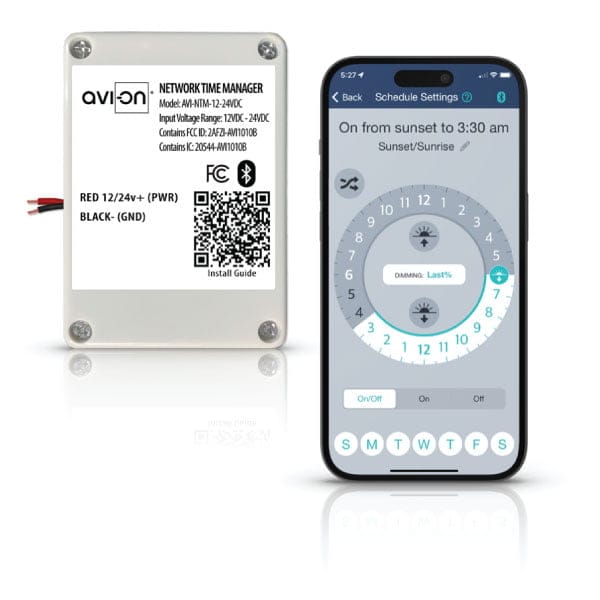Take advantage of Avi-on Resources
Avi-on is committed to providing innovative and easy-to-use lighting solutions. To help you get the most out of your Avi-on products, we offer a comprehensive set of resources on our website. Whether you’re a new user or a seasoned pro, our resources are designed to guide you every step of the way.
New in the Knowledge Base
We are excited to announce the release of our latest knowledge base article: “How Schedules Work with Avi-on Lighting Controls”.
Discover how you can optimize your lighting control systems by leveraging scheduling features. This article along with the many other Knowledge Base posts will walk you through the setup and benefits, ensuring you get the most out of your Avi-on Lighting Controls.
Is the Network Time Manager installed at the site?
Yes, the NTM is installed on-site as part of the mesh network.
Can we simulate a temporary power outage to see how Avi-on Controls respond?
Yes. It is fine to run power loss tests, and the system will come back online without intervention. However, it is not best practice to maintain daily schedules and a mesh network with power cycling every day, especially if the power cycles are happening at the same time the schedules are likely to be turning the lights on and off.
The only clarification below is that the devices will not run their schedules after a power outage until they get a time sync from the NTM. So, depending on whether the devices also power cycled with the repeaters and how critical the repeaters are to the mesh, the schedules may not run until power is fully restored. We generally design the mesh to avoid single link failures causing an issue, but sometimes in outdoor applications, it is not easy to avoid.
Does that mean that when power is restored and when time sync happens, the fixtures will simply stay ON with the last channel/dimming maintained?
Each device has its own ability to keep accurate time for as long as it has power. All the schedule information is stored in permanent memory in each device.
We don’t put a battery in every single node to avoid the cost and temperature limitations that would result. So, when the device is power cycled, it can still keep time, but it does not know what time it is. The NTM detects power outages and sends a time message to the whole network, which both gives the devices the correct time to use and synchronizes them.
If some nodes don’t lose power, they will continue to run their schedules individually. The clock in the nodes is accurate to 1-2 seconds per month.
The NTM also sends periodic time updates to keep the devices in sync and to cover the cases where devices lose power and the NTM doesn’t. That is configurable from one minute to daily. We usually set it to a few hours or so, but we set it to a short time for temporary power outage tests.
During the window after the devices lose power and before the network time manager restores time sync, the schedules will not run. We do that to avoid having them run randomly. When the device gets time sync again, it checks what the schedule says it should be doing and moves to that setting. In the meantime, it will be on at 100%.
In a good network with the nodes powered, it only takes a minute or two, usually much less, for everything to re-sync.
As a result, stable power across the site is an important component of the system running reliably on schedules. Motion-based controls will restore individually within a few seconds of regaining power.
This is true for any control system. Gateway systems usually have no ability for the nodes to run autonomously even for a short time.
When a user wants to run an accurate and sophisticated control strategy for outdoor lighting, they are stepping up to have a higher dependence on power and in-ground wiring than they may have been used to. This is not an uncommon circumstance, and customer education/experience is required.
